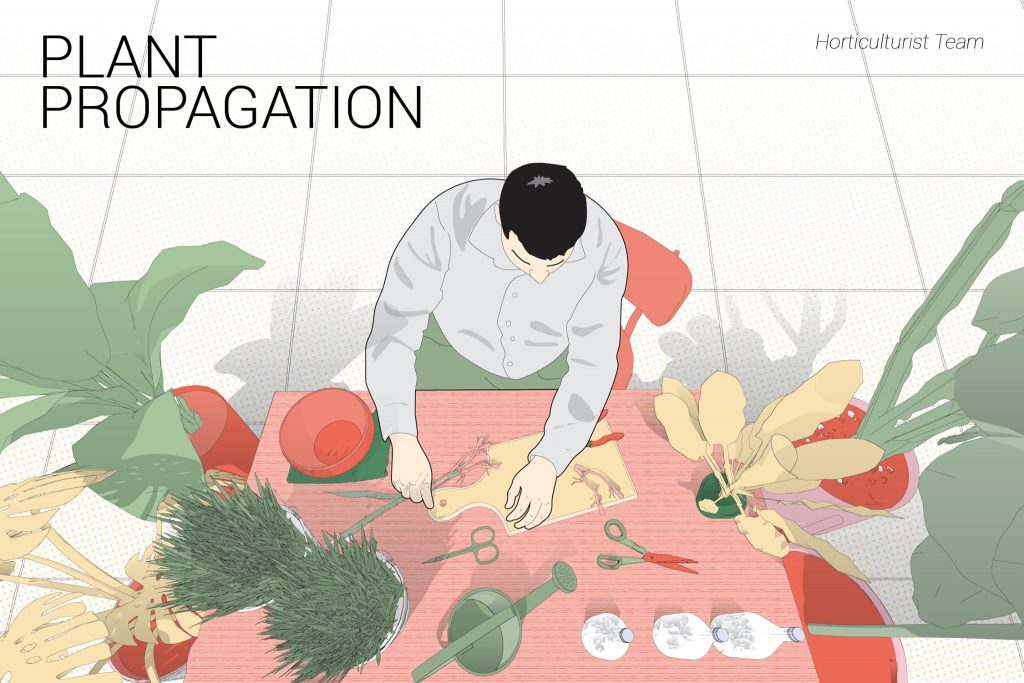
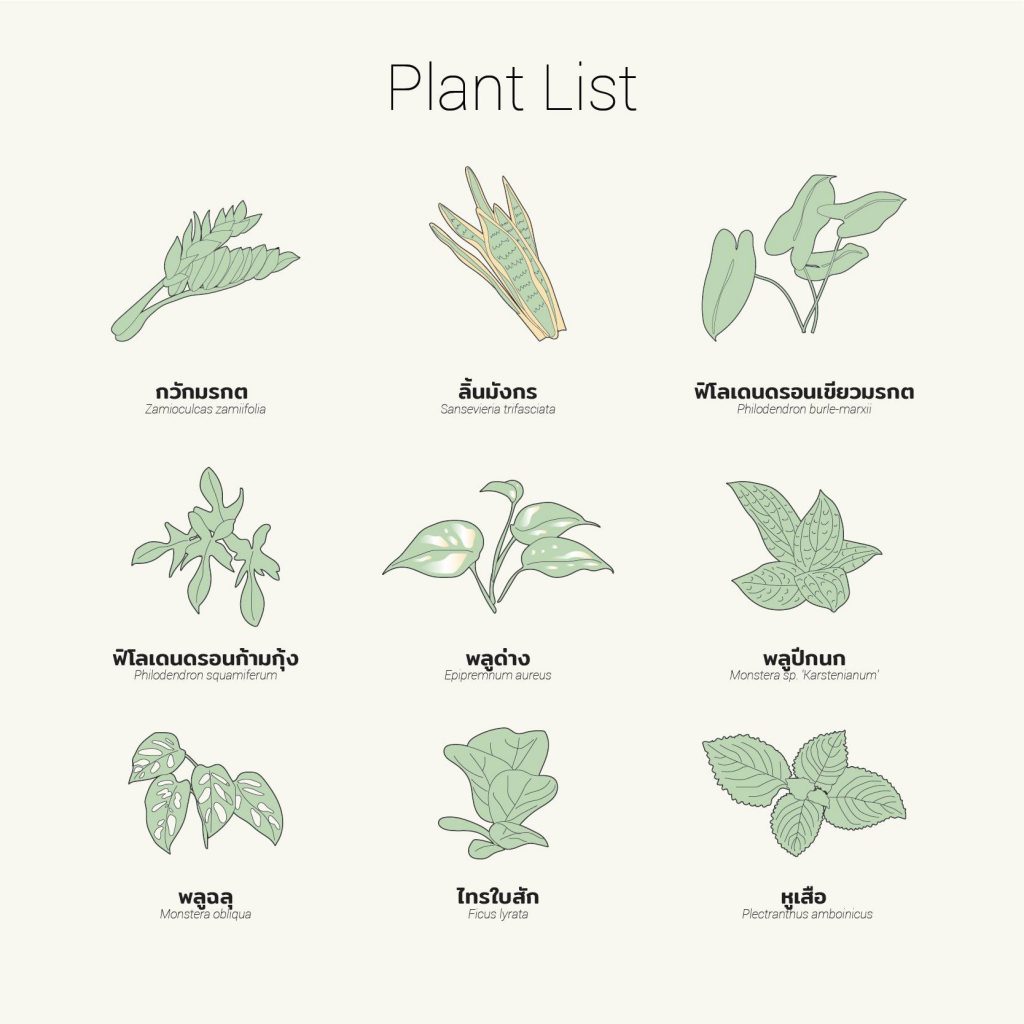
To begin with, our horticulturists choose to reproduce the ones found in our office space, which are softwood species with crawling stems, dense branching, and lateral growth. Requiring no additional biostimulants for their roots, they are easier to propagate than hardwood. For the plants to be further propagated by our team, there are altogether 10 softwood plants found in our garden, listed below.
.
Zamioculcas zamiifolia หรือ กวักมรกต
Sansevieria trifasciata หรือ ลิ้นมังกร
Philodendron burle-marxii หรือ ฟิโลเดนดรอนเขียวมรกต
Philodendron squamiferum หรือ ฟิโลเดนดรอนก้ามกุ้ง
Epipremnum aureus หรือ พลูด่าง
Monstera sp. ‘Karstenianum’ หรือ พลูปีกนก
Monstera obliqua หรือ พลูฉลุ
Asparagus densiflorus หรือ ปริกน้ำค้าง
Plectranthus amboinicus หรือ หูเสือ
Ficus lyrata หรือ ไทรใบสัก
.
Although there are 2 types of plant propagation: Sexual and Asexual propagation, our horticulturists utilize only the sexual propagation method since it is more convenient. It allows us to reproduce new plants directly from only one parent plant without needing the union of sex cells. It can be done in various ways such as cuttings, layering, division, separation, and grafting. The process starts by taking some part of the parent plant.
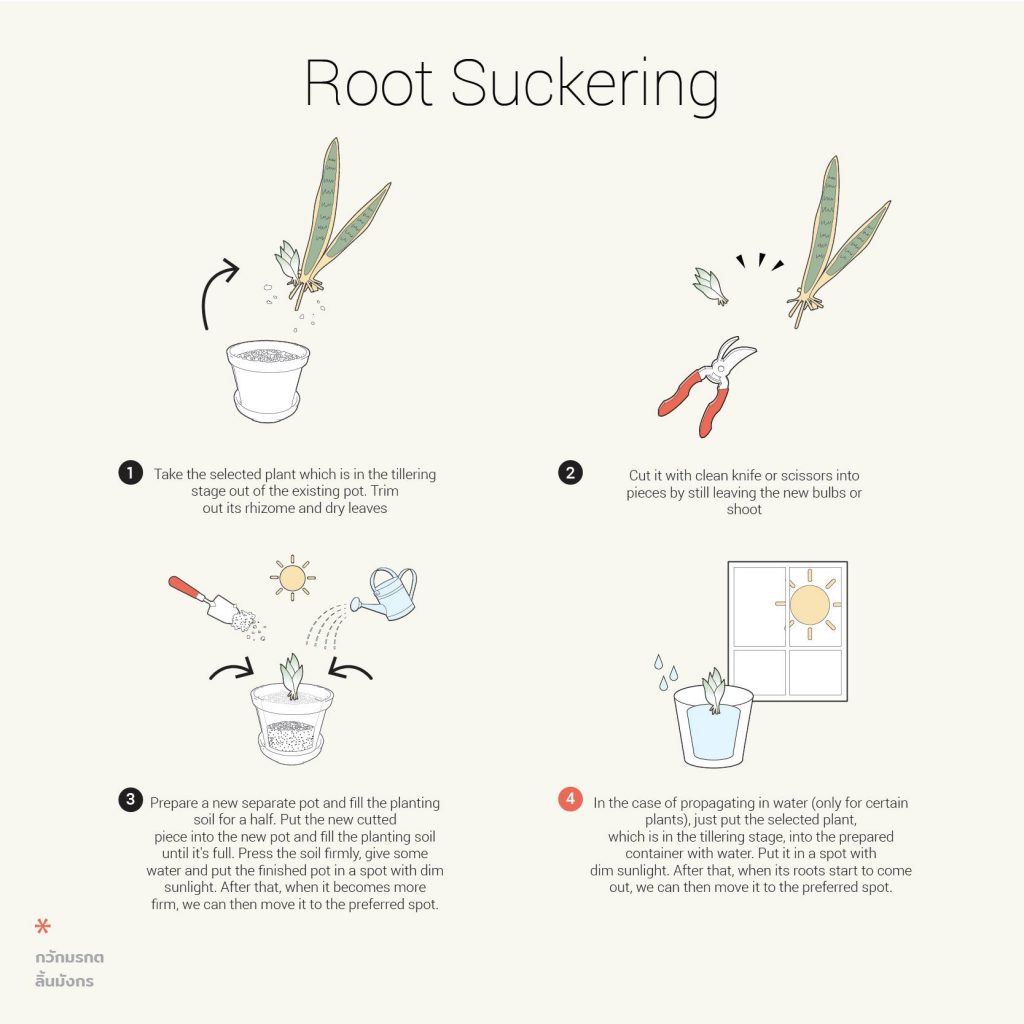
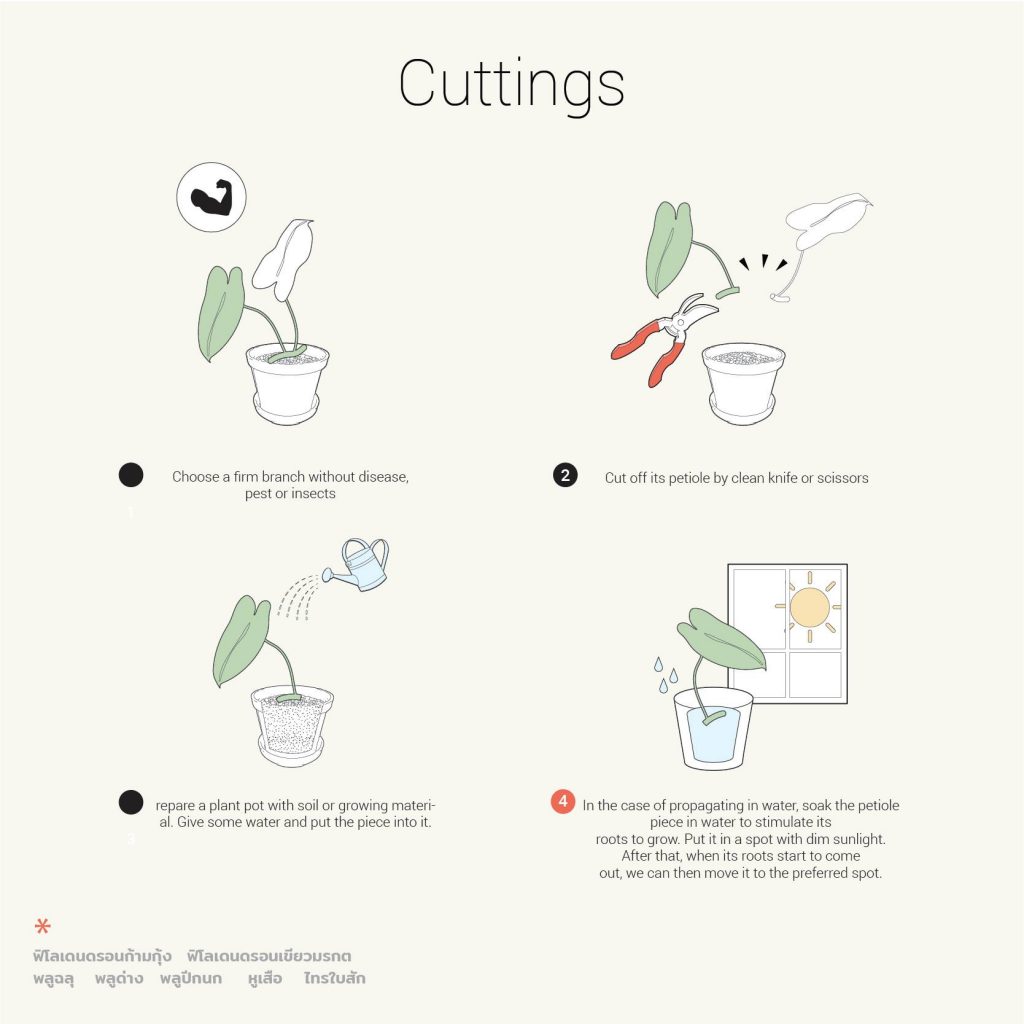
1.2. Cuttings: Suitable for many types of plants. It means taking out a cutting, a vegetative part of the plant from the parent plant in order to grow in an appropriate environment and grow into a new plant
.
Suitable plants for leaf cuttings and stem cuttings: Fiddle-leaf fig, Philodendron pedatum., Window-leaf, Philodendron erubescens K.Koch & Augustin., Golden Hunter’s Rolae, Monstera sp. ‘Karstenianum’, Indian borage
.
Step 1: Choose a firm branch without disease, pest, or insects
Step 2: Cut off its petiole by clean knife or scissors
Step 3: Prepare a plant pot with soil or growing material. Give some water and put the piece into it.
Step 4: In the case of propagating in water, soak the petiole piece in water to stimulate its roots to grow. Put it in a spot with dim sunlight. After that, when its roots start to come out, we can then move it to the preferred spot.
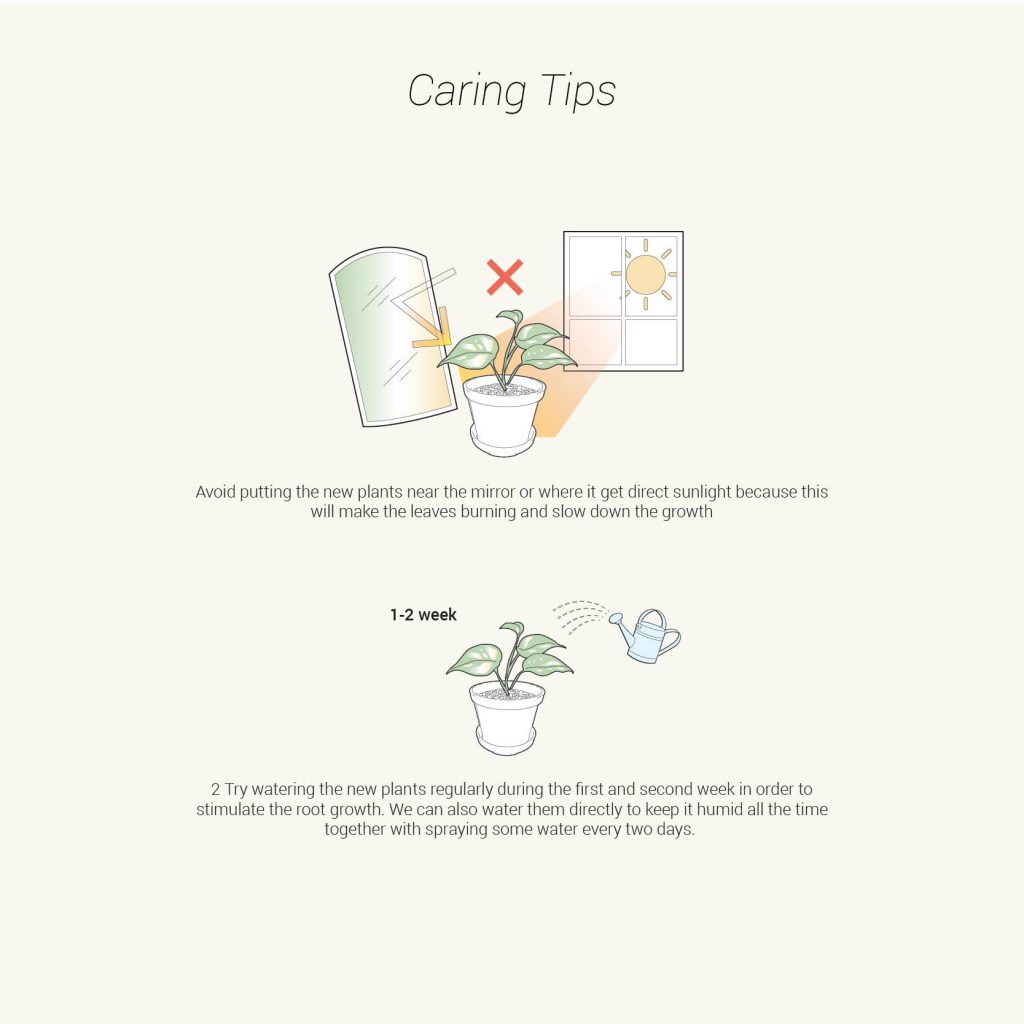
1. Avoid putting the new plants near the mirror or where they get direct sunlight because this will make the leaves burning and slow down the growth
2. Try watering the new plants regularly during the first and second weeks in order to stimulate root growth. We can also water them directly to keep them humid all the time together with spraying some water every two days.

